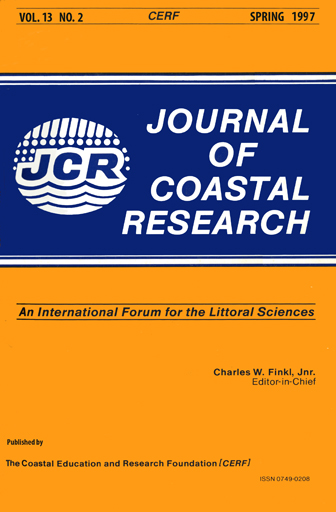Comparison of Landsat Thematic Mapper and High Resolution Photography to Identify Change in Complex Coastal Wetlands
Keywords:
Louisiana, wetland classification, wetland change detection, remote sensingAbstract
Landsat Thematic Mapper (TM) images were used to generate pre- and post-hurricane classifications of a complex wetland environment in southern Louisiana. Accuracies were estimated as 77% and 81.5% for the pre- and post-classifications that included water, emergent vegetation, floating vegetation, and mud flats. From the two classifications, areas of emergent vegetation loss were identified. The classifications and change map were compared to similar output generated from high resolution color infrared photography. The comparison showed spatial scale of the sensor was the most important factor in separation of classes in this type of wetland environment. Classifications derived by using the TM images provided good class separation when one class dominated more extensive areas (>30 m), but not when mixtures of wetland types were on the same order as the TM sensor spatial resolution. Boundary pixel mixtures were problematic, however problems also occurred in areas of fairly continuous canopies containing small pockets of water and floating vegetation, and in areas of degrading marsh. Both areas were predominately misclassified as emergent vegetation. In the case of change detection, loss of emergent vegetation occurring as small pockets was not identified, whereas loss of degraded marsh was identified but the spatial continuity and extent overemphasized. In combination, these misclassifications resulted in the TM change analysis overpredicting emergent vegetation loss by about 40%.


